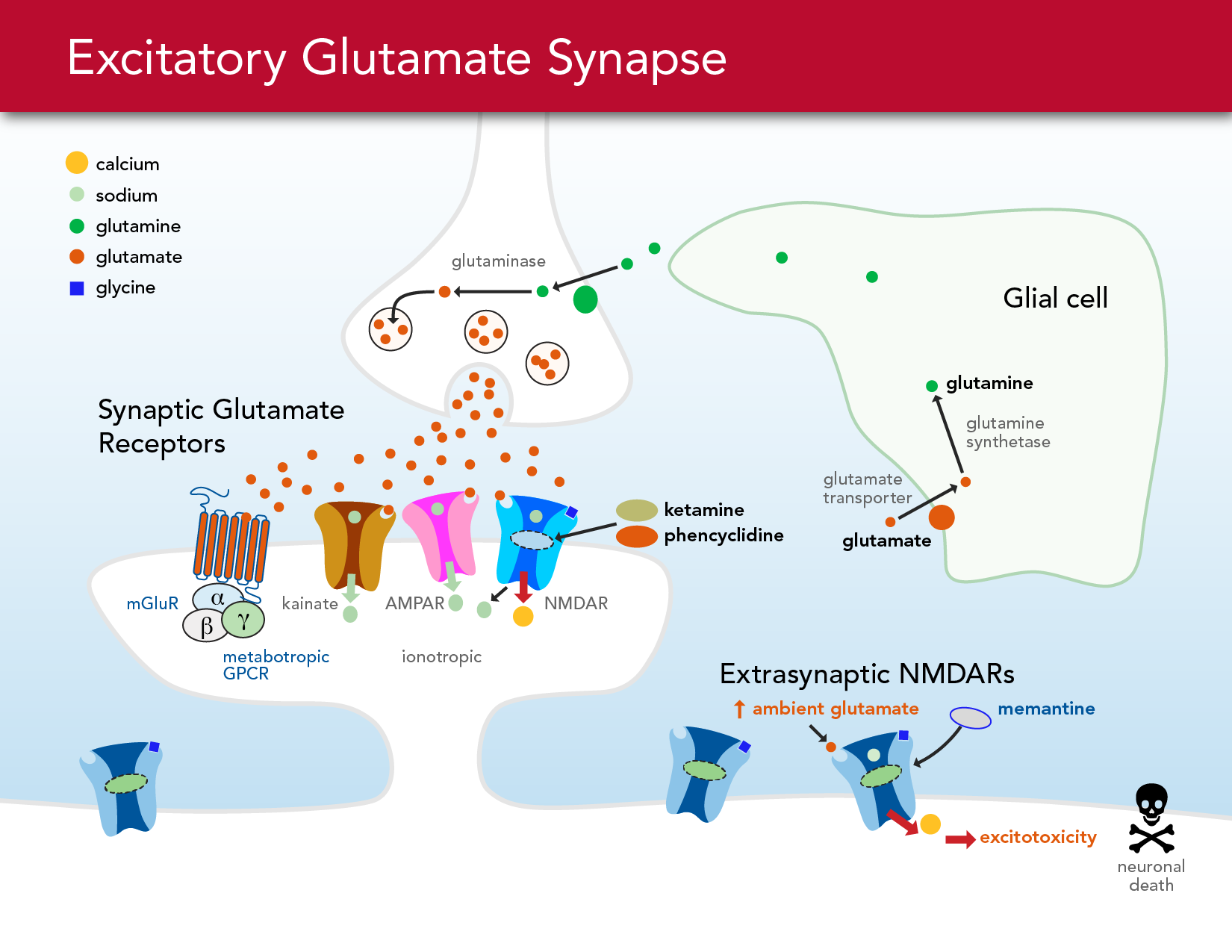The Science
Glutamate and Addiction Biology
Glutamate, the predominant excitatory neurotransmitter in the Central Nervous System (CNS), holds a pivotal role in shaping addictive behaviors. Take, for instance, the dissociative anesthetic ketamine—a glutamate antagonist at the NMDA receptor, classified as a Schedule III controlled substance. Beyond its intended use, ketamine has emerged as a substance of abuse, inducing diverse symptoms such as anxiety, dysphoria, hallucinations, and a sense of detachment1.
Looking beyond specific molecular targets like ketamine, the intricate interplay of normal and abnormal glutamate signaling is fundamental to understanding addiction biology. According to Kalivas and Volkow2, while dopamine kickstarts addiction, long-term addictive patterns involve alterations in glutaminergic signaling within pleasure-associated structures like the nucleus accumbens.
The persistent compulsion, craving, and drug-seeking behaviors characteristic of addiction may stem from prolonged substance abuse, impairing decision-making through changes in glutamate signaling and plasticity, as seen in cases like cocaine abuse3.
Tezampanel, a competitive glutamate antagonist primarily targeting AMPA and kainite receptors, emerges as a promising pharmacological candidate for addiction treatment. Considering our current comprehension of glutamate’s multifaceted role in addiction, tezampanel holds potential as an agent to address addiction across various substances of abuse.
- Hospira Inc. Ketamine hydrochloride, Full Prescribing Information, rev. July 2022.
- Kalivas PW, Volkow ND. The neural basis of addiction: a pathology of motivation and choice. Am J Psychiatry. 2005 Aug;162(8):1403-13. doi: 10.1176/appi.ajp.162.8.1403. PMID: 16055761.
- Niedzielska-Andres E, Pomierny-Chamioło L, Andres M, Walczak M, Knackstedt LA, Filip M, Przegaliński E. Cocaine use disorder: A look at metabotropic glutamate receptors and glutamate transporters. Pharmacol Ther. 2021 May;221:107797. doi: 10.1016/j.pharmthera.2020.107797. Epub 2021 Jan 9. PMID: 33359590.
